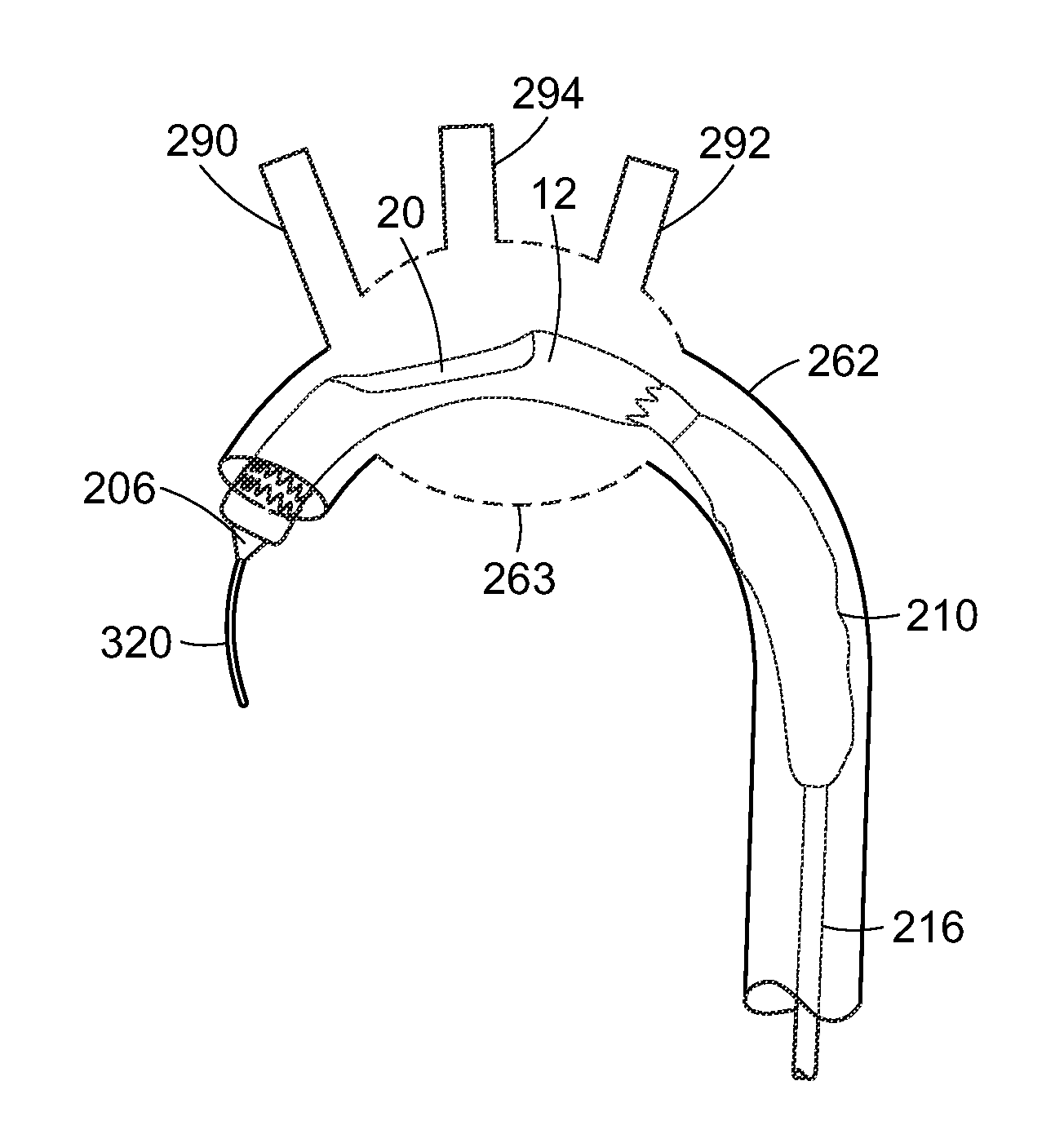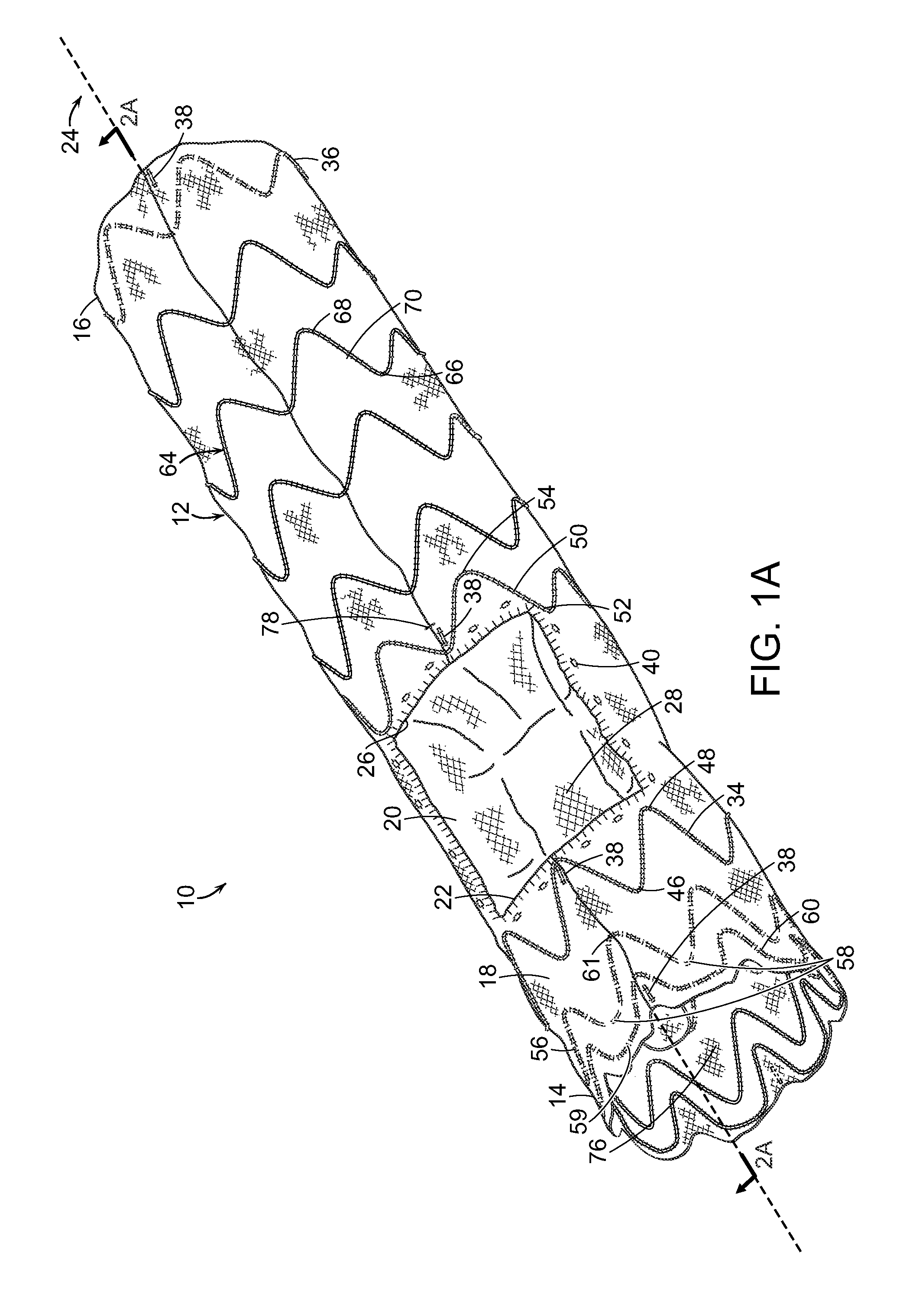Device and method for aortic branched vessel repair
a technology of aortic branched vessels and devices, which is applied in the field of devices and methods for repairing aortic branched vessels, can solve the problems of life-threatening conditions of aortic aneurysms, high morbidity rates, and brain ischemia, and achieves reduced manipulation of aortic arch and resulting stroke in patients, and large margin of error in placement. , the effect of large apertur
- Summary
- Abstract
- Description
- Claims
- Application Information
AI Technical Summary
Benefits of technology
Problems solved by technology
Method used
Image
Examples
example 1
[0084]A 74 year old male with penetrating atherosclerotic ulcer (PAU) of the aorta located on the interior side of the thoracic arch at the level of the left common carotid was treated. A model of the patient's anatomy was made based on computer tomography (CT) scanning A right carotid to left carotid bypass was performed initially without ligating the left carotid. A tubular aortic component of an aortic graft assembly (46 mm−42 mm×80 mm) was deployed at the sinotubular junction. The ascending aorta of this patent had a graft diameter of about 44 mm. A tubular aortic component having a diameter of 46 / 42 mm×80 mm was employed to provide a smaller healthy neck. The proximal end of the tubular aortic component of the aortic graft assembly was released to optimize apposition with the wall of the ascending aorta.
[0085]A tunnel graft (46 mm−34 mm×220 mm) was used in the aortic graft assembly. The tunnel graft was 15 mm in diameter. The aperture of the tubular aortic component was 30 mm×3...
example 2
[0086]An 81 year old male with an aneurysm at the arch of the aorta was treated. A CT scan was employed to model the patient's anatomy. The thoracic aneurysm was in a region of the aortic arch and at least a portion of the descending aorta. The tunnel graft had a diameter of about 15 mm.
PUM
 Login to View More
Login to View More Abstract
Description
Claims
Application Information
 Login to View More
Login to View More - R&D
- Intellectual Property
- Life Sciences
- Materials
- Tech Scout
- Unparalleled Data Quality
- Higher Quality Content
- 60% Fewer Hallucinations
Browse by: Latest US Patents, China's latest patents, Technical Efficacy Thesaurus, Application Domain, Technology Topic, Popular Technical Reports.
© 2025 PatSnap. All rights reserved.Legal|Privacy policy|Modern Slavery Act Transparency Statement|Sitemap|About US| Contact US: help@patsnap.com



